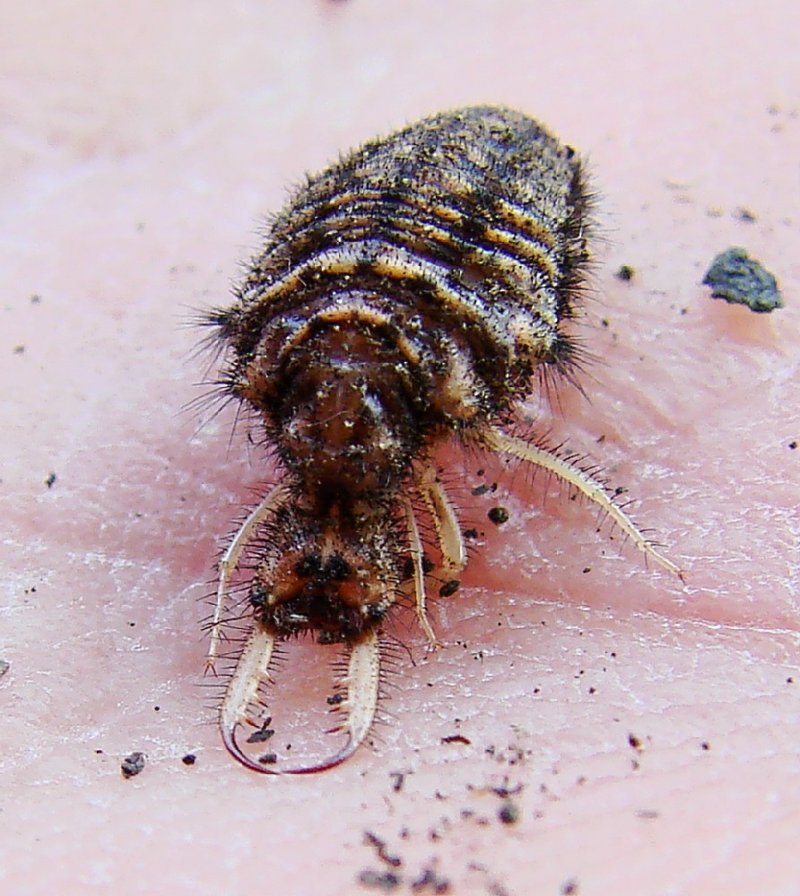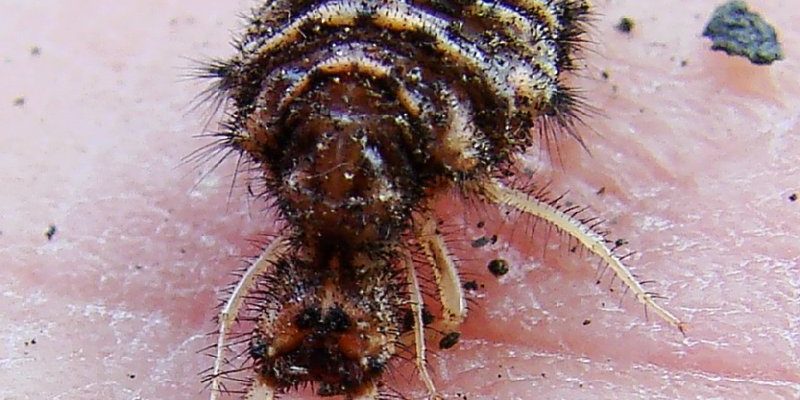
Identifying ant lion larvae can be a bit of a challenge, especially if you don’t know what to look for. But don’t worry! In this guide, we’ll walk through the details, helping you recognize these remarkable larvae in their natural habitats—whether it’s a sandy beach, woodland area, or even your backyard. Grab a cup of your favorite drink, and let’s dive in!
What Are Ant Lion Larvae?
Ant lion larvae are the juvenile stage of a fascinating insect from the Neuroptera order. They’re known for their unique predatory behavior and distinct appearance, which can leave many puzzled at first glance. Unlike their adult counterparts, which are delicate and almost fairy-like, these larvae are compact and robust, often resembling tiny alligators with their elongated bodies and large mandibles.
You might be wondering what makes them so interesting. For one, ant lion larvae are famous for their *trap-building skills*. They create conical pits in sandy substrates where unsuspecting ants and other small insects tumble in, unable to escape. It’s a clever method of hunting that showcases nature’s ingenuity. If you ever see a small pit surrounded by loose sand, it’s a strong indicator that ant lion larvae might be nearby!
Where to Find Ant Lion Larvae
Generally, ant lion larvae prefer sandy, dry areas. This means you might spot them in places like:
- Sandy beaches
- Desert environments
- Wooded areas with exposed soil
- Gravel paths
Look closely at the ground for their distinctive pits. These pits are about 2 to 4 inches wide and can be recognized by their steep sides and fine granules of sand. When you find one, take a moment to stand still and observe. If you’re lucky, you might catch an ant unaware, falling prey to the stealthy predator lurking below the surface.
Here’s the thing: the best time to spot these larvae is during warm months. They thrive in hot weather, so late spring to summer is prime time for observing their antics. If you’re out on a nature walk, keep your eyes peeled!
How to Identify Ant Lion Larvae
Identifying ant lion larvae involves spotting key features. These larvae typically have:
- A tapered, elongated body: They can be up to 2 inches long.
- Large, curved mandibles: Perfect for seizing their prey.
- A distinctive coloration: Most are a light brown or gray, helping them blend into their sandy surroundings.
When you see a little creature with these traits, you’re likely looking at an ant lion larva. Don’t be fooled by their fearsome looks; they play an important role in controlling ant populations and maintaining the ecological balance.
If you want to get a closer look, gently dig around the pit. Be cautious, as the larvae can be sensitive to movement. You might find them wriggling at the bottom, ready to strike if provoked!
The Life Cycle of Ant Lions
Understanding their life cycle helps us appreciate these creatures. Ant lions undergo a complete metamorphosis, which includes four stages: egg, larva, pupa, and adult.
1. Egg stage: Female ant lions lay tiny eggs in sandy areas. Each egg is so small it’s easy to miss.
2. Larva stage: After a few days, the larvae hatch and immediately begin their predatory lifestyle, creating their traps and hunting.
3. Pupa stage: Once they grow large enough, ant lion larvae dig themselves into the sand and pupate, transitioning into adulthood.
4. Adult stage: Finally, they emerge as delicate, winged insects, ready to mate and lay eggs, completing the cycle.
Each stage serves a purpose in the ecosystem. The larvae are crucial as predators, while adults help with pollination. This intricate life cycle is something to behold, isn’t it?
How Ant Lions Hunt
Ant lions are skilled hunters. As we mentioned earlier, they create traps in the sand. Here’s how it works:
1. They dig a funnel-shaped pit in sandy areas.
2. The larvae hide at the bottom, camouflaged by the sand.
3. When an unsuspecting ant or insect slips into the pit, the larva quickly pounces, grabbing its meal with those powerful mandibles.
This ambush technique is a perfect example of how nature can be both brutal and beautiful—seemingly simple, yet incredibly effective. Watching this predatory behavior can be quite the adventure if you’re in the right spot at the right time!
Why Ant Lion Larvae Matter
You might be asking yourself why it’s important to know about ant lion larvae. Here are a few reasons:
1. Ecosystem Balance: They help control the populations of ants and other small insects, contributing to a balanced ecosystem.
2. Biodiversity: Ant lions are part of a diverse group of insects that play different roles in the environment.
3. Education: Studying these fascinating creatures can spark interest in entomology and the natural world.
Understanding their role can lead to greater awareness of environmental issues and the need to protect these ecosystems.
Final Thoughts on Identifying Ant Lion Larvae
Spotting and identifying ant lion larvae in their natural habitat isn’t just an exciting outdoor activity; it’s a chance to connect with nature and learn more about the intricate world around us. Next time you’re out enjoying the outdoors, keep an eye out for those tiny pits in the sand. You never know what fascinating creatures are just beneath the surface waiting to surprise you!
So, grab your curiosity and your sense of adventure, and venture out to discover the captivating world of ant lions. Happy exploring!

